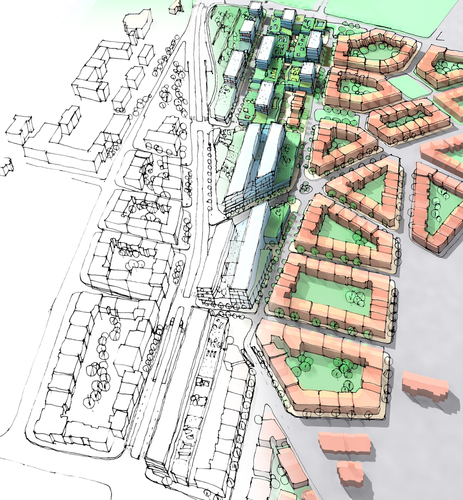disadvantages | greenfield v/s brownfield project | cost
What is a brownfield project? Simply put, a brownfield is a piece of land that has been previously developed and is not currently in use. The land is potentially contaminated, but it is not necessarily a brownfield.
For this reason, many brownfield projects are referred to as greenfield. But the distinction between a greenfield project and a brownfield project isn’t as clear-cut as it might seem.
Disadvantages of the Brownfield project
A number of advantages and disadvantages of a brownfield project are common across the UK. Unlike greenfield development, brownfield redevelopment can significantly reduce the cost of construction by ensuring that vital infrastructure is already present.
However, some of these advantages can also lead to other problems. The main disadvantage is the fact that brownfield sites often lack the appeal and space for development that greenfield sites do, including the presence of wildlife.
In addition to the high cost of remediation, a brownfield site may include a dilapidated building, mineral rights, and crops. As a result, redevelopment and reuse of these sites may prove challenging.
However, they can provide economic benefits, such as stimulating job growth and helping to boost local tax bases. In addition, brownfield development can be a cost-effective way to transform a dilapidated industrial site into modern retail, office, or residential space.
Brownfields are a risky investment because they are contaminated. Once purchased, they must be remedied and cleaned, which can be costly. Furthermore, the contamination may have happened decades ago and is difficult to trace.
While greenfields are undeveloped and have not been used, brownfield sites are contaminated. As a result, they are more difficult to develop, but the benefits far outweigh the risks.

Greenfield v/s Brownfield project development
The differences between greenfield and brownfield software development are primarily based on their approach to development. Greenfield software development focuses on developing a brand new product or enhancing an existing product.
Brownfield software developers begin with a clear idea of the business target, scope, and competitive landscape, then use existing code or architecture to build a new system or feature. However, there are important differences between the two methods.
The key differences between the two types of software development are largely determined by the industry and the type of application that you are launching. For instance, greenfield development is more costly than brownfield development, but it is much easier to implement.
However, developers must spend more time researching and developing in this process. Developers can also be less sure of how their product will perform in the real world, as market needs can change quickly.
However, both approaches are highly beneficial for different types of projects. Brownfield development projects are often built on existing business processes and infrastructure, and they can be more difficult to launch than greenfield projects.
Additionally, brownfield projects require more rigorous testing and analysis. If you’re just looking to improve an application or make small changes, brownfield development may be your best option. If you have an existing application, you can still choose this approach.
Related: Turnkey Project
Costs of development
When it comes to IT, greenfield or brownfield software development refers to the process of installing new hardware and software. While greenfield software development begins from scratch, brownfield development is usually based on existing applications.
The difference lies in the types of software and hardware that are implemented. Brownfield projects tend to be less costly due to the existing hardware and software infrastructure.
However, they can be complicated due to dependencies between the new software and the existing systems.
As with greenfield software development, brownfield software development adds improvements to traditional software engineering practices that assume a clean target environment. It is a more complicated process, and developers must know the local landscape well.
In addition, legacy code often reflects complex environmental conditions. Consequently, integration and maintenance costs rise dramatically, and these projects often have fewer skilled developers.
To mitigate these risks, brownfield software development requires careful planning and preparation.
When developing new software, it is important to have an understanding of the business process. This will help developers figure out the best path forward. The process begins with an end-to-end code audit, which helps developers recognize the basis for an application.
Once this assessment is complete, developers adjust the technology to fit the needs of the business. Using this methodology, developers can even salvage old code and incorporate it into the Agile development process.
